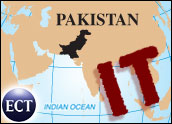
Asia Pacific is still the dominant locale for contact-center outsourcing, new figures from Frost & Sullivan confirm.
The number of contact centers in the region totaled more than 21,360 in 2004 and is expected to grow at a compound annual rate of 9.1 percent to reach 39,247 by the end of 2011, according to the firm’s report, “Assessment of the Asia Pacific Contact Center Market.”
India, of course, is fueling the trend. Another driver is the emergence of near-shoring in the region, Frost & Sullivan notes. Companies in Japan and South Korea, for instance, are sending their contact-center operations to China.
Contact centers in Singapore, meanwhile, are locating their operations in neighboring Malaysia. Australian companies are focusing on India and the Philippines.
Japan Leads the Way
Japanese companies are leading the way in near-shoring their contact-center activities, with Japan-to-China the dominant pattern, Bruce Rutherford, international director and head of Jones Lang LaSalle’s contact center group, told CRM Buyer.
But the greatest flow overall is still from the United States to Asia. “American companies by far are the largest group — 70 percent of the total — that outsource their contact-center operations.” No less than 70 percent of the U.S. activity centers on Asia, he added.
Who’s Next?
The business case for outsourcing contact-center activities — and even higher level business processes — to Asia is well established. That doesn’t mean it’s a slam dunk for companies.
“There have been American companies going into Asia to do this that have grossly underestimated the issues involved,” Rutherford pointed out. For instance, “accent neutralization” — the industry term for employing customer service reps who speak unaccented English — has been a thorny issue.
Indeed, there have been high-profile instances of multinationals — Dell, for one — that scaled back their Indian call-center operations because of the accent issue.
Some contact-centers in the region are addressing the problem, though, ideally by hiring native speaking Brits, Australians and even Americans.
Such employees are typically young, given the pay rate, Frost & Sullivan analyst Jared Carleton told CRM Buyer. Working in call centers is viewed by many as relatively easy work and gives students or the newly graduated the opportunity to travel.
It is impossible to quantify this trend, Carleton said, “but yes — it is happening.” Only a select group of U.S. students and graduates are going this route, though. “Students with foreign-denominated debt — that is, student loans — cannot afford to do this,” he said, “even if the contact center is paying a premium rate to them.”
In general, recruitment is a problem for contact centers in the Asia Pacific region. The labor attrition rate there is high, averaging 19.8 percent and even higher in India and the Philippines.
Latin America, Eastern Europe Gaining Ground
The Latin American and Eastern Europe regions are gaining ground on Asia Pacific — although not for cost reasons — other studies have shown.
It is not likely that Asia Pacific will ever lose as much ground as Ireland has, however. Ireland was a leading destination for call-center outsourcing in the 1980s and 1990s, but the cost structure offered by other regions eroded that business base, and today few companies outsource their low-level contact center operations there.
“You hear talk in the industry that wage inflation in India will erode its business advantage,” Rutherford said, “but that will not happen for a long time.” Wages are roughly US$400 a month. Even at a 15-percent wage inflation rate, they would rise by $60 per month — a level that most operations can absorb.
The Comfort Factor
However, there is a noticeable trend among Western European companies to outsource their contact-center operations to Eastern European countries, according to Rutherford.
Following the Japan-to-China flow of business, that is the fastest growing trend, he said.
“It is a business culture issue,” Carleton explained. “Businesses in Germany would prefer to outsource to Poland and Romania because they can speak German and English. Also, it is closer to travel in case a problem arises.”
French companies are outsourcing their contact-center operations to Northern Africa for the same reasons.
Latin America’s Story
The real growth story over the next few years, Rutherford suggested, will be in Latin America. “It is my opinion that we will see very rapid growth in Latin American and certain Caribbean markets,” he predicted. Geography is one reason; the need to provide customer service in Spanish is another.
The contact-center industry in the Caribbean will double in size this year, to 50,000 agent jobs, according to a study by Zagada Markets.
It is true that U.S. companies want to locate in areas where there is a large native Spanish speaking workforce, Philip Dickenson Peters, CEO of Zagada Markets, told CRM Buyer. However, there are other reasons, among them diversification of operations should a natural disaster or terrorist attack disable another location.
In addition, operating costs can be lower in the Caribbean than in the Asia Pacific region.






















































